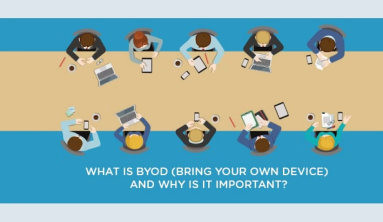Luckily, IT outsourcing comes to the rescue, with its numerous benefits – optimising time and costs of the project, tapping into the knowledge base of a skilled IT partner, increasing operational efficiency and allowing you to focus on core business. That is why more and more companies pass IT responsibilities over to third parties.
There are many different models of cooperation with a software provider to choose from, where staff augmentation and outsourcing a dedicated team of experts are considered to be one of the most popular.
But which one should you choose?
Firstly, let’s take a look at a brief description of both models.
WHAT IS STAFF AUGMENTATION?
Staff augmentation is a type of outsourcing service, where a software company provides their engineers in the form of external hire, usually on a Time & Materials contract basis.
In practice, the in-house team of the outsourcer is extended by (or solely comprised of) third-party specialists working on the premises of the buyer for the time of the project.
Thanks to staff augmentation, companies reduce costs related to recruitment, payroll services and project implementation. This model is also easily scalable – it’s much easier to end this kind of partnership in comparison to terminating an employment contract, therefore it is possible to quickly decrease (or increase) FTEs if needed.

What is more, this complete shift of responsibility allows for minimising formalities with HR and employment and allows the outsourcer to focus more on the core business.
WHAT DOES OUTSOURCING A DEDICATED TEAM MEAN?
Outsourcing a dedicated team means partnering with a remote software house and handing over the project to its team of programmers.
It is usually a much broader partnership than just team augmentation, as it also covers a wide variety of software-related services, such as analysis and design, UI/UX design, quality assurance, project management or support and maintenance.
And, as the involvement of the vendor is in-depth, the desire to achieve the best possible results is proportionally higher in comparison to staff augmentation.
All this and a combination of typical outsourcing benefits makes the software house rather a close and trusted partner than just a temporary service provider.
DEDICATED TEAM VS. STAFF AUGMENTATION – A COMPARISON
So, if both models bring similar benefits, why should you forget about the first one?
Let’s take a look at a short comparison of pros and cons of both options.
-
RESPONSIBILITIES AND COSTS
In both models, the service provider is responsible for recruitment and employment of engineers.
However, when outsourcing a dedicated team, the vendor covers also the costs of office spaces, software licenses, hardware and utilities, employee’s training, and their benefits. They also take care of the overall wellbeing of software developers.
In terms of employment costs, what’s visible is just a tip of the iceberg. There are a lot of cost factors determining the Total Cost of Ownership for this kind of projects that the software house has to bear. Nevertheless, when done well, this effort results in increased employee commitment and lower attrition rate.
All this for the convenience of the outsourcer, who benefits from happy, motivated and skilled team.
-
WORKING AND ORGANISATIONAL CULTURE
There’s also a major difference in terms of working and organisational culture in both models.
Sitting in the same office allows developers in an outsourcing team to create a unique environment of knowledge exchange and cooperation. Tight friendship bonds, overall atmosphere and team spirit are usually incomparable to the ones in the staff augmentation model.
What’s more, the software house takes care of their comfort of work, proper career development and mentoring, provides all the necessary tools and strengthens up the culture which creates the core of the company.
At the same time, engineers working in the staff augmentation model may not identify themselves with neither of the parties, as they are aware that sooner or later they will be working in another project, for another organisation. This is a popular source of demotivation and may be a trigger for changing employment.
-
PROJECT MANAGEMENT
In the staff augmentation model, project management is usually done internally by the outsourcer, despite the project being developed by external workers.
Hiring a dedicated team, on the other hand, means also hiring a project manager which minimises project management responsibilities on the buyer’s side, with full management liability of the project being taken over by the vendor. There’s usually a single point of contact established for the convenience of the buyer.
Another benefit related to external project management is the governance system of the software provider.
An experienced software house has already worked out the most efficient way of handling IT projects, has a number of similar partnerships in the portfolio and simply knows how to get things done.
-
RELATIONSHIP WITH THE VENDOR
There can be no fruitful business relation without a solid base of mutual trust and understanding.
When outsourcing a dedicated team of developers, companies usually create a more direct and more permanent cooperation. A close partnership enables for deeper understanding and knowledge of the actual needs and challenges your company faces. Without trust it is hard (if not impossible) to avoid frustration and discomfort in day-to-day work.
A relationship with the provider of staff augmentation services is shallower and comes down to simply providing resources in the form of a desired number of engineers. This kind of business relationship often terminates with the last line of code and thus it is not that deep. At the end of the day, the supplier often displays significantly less interest in the final success of your IT project.
-
COOPERATION KICK-OFF
Usually, the time necessary for the kick-off with a staff augmentation provider is slightly shorter than hiring a dedicated team of programmers.
However, the responsibility for finding the right match lies partially on the outsourcer. There is a risk the buying company will not be able to precisely determine candidate profiles, skills and technical experience needed for the project, and therefore will need to involve an expert either internally, or on the provider’s side. Without this, the kick-off may last longer and cost more.
On the other hand – it is the sole responsibility of the software house to assemble a dedicated team for each project, scale it according to current needs of the customer and ensure smooth management and execution of development. The role of the outsourcer is focused on determining the scope of the project and its functionalities, rather than stating personal preferences regarding programmers.
-
INTERNAL IT POLICY
Moreover, carrying out projects with third-party contractors usually results in the lack (or significant shortage) of in-house programmers. And, as software development may not be the core of your business, when you employ engineers solely for the time of the project, you may fall into a kind of a loop: you can’t employ engineers you previously used for staff augmentation, so after the end of the project you need to find other developers, introduce them to the company, share the know-how and domain experience etc. – just to let them go after the project. And so the loop continues.
-
INSIGHTS AND KNOWLEDGE
Another disadvantage of temporary employment is that augmented developers usually lack the knowledge of your organisation, your other projects or products, your previous business experiences or industry insights. Therefore, you can’t expect them to be as proactive or innovative as a regular employee would be.
That’s where another advantage of outsourcing a dedicated team lies when compared to staff augmentation – a dedicated team supplier creates a close relationship that allows for handling your needs in a personalised way, and the team has great opportunities to dig deep into your business and get to know your true needs.
A good software partner will come up with initiatives that can give your company a competitive edge.
BOTH METHODS HAVE THEIR USES, BUT OUTSOURCING A DEDICATED TEAM BRINGS MORE TO THE TABLE
Some of the benefits of staff augmentation are undeniable. As a method of dealing with IT talent shortage, it can be one of the most efficient ways of handling very short, unexpected projects, when your business is in need of ultra-fast results with limited budget involved.
However, the benefits of staff augmentation tend to fade away in direct proportion to the project’s length. The longer and more complex the IT project is, the more efficient and beneficial partnering with a remote software house will be.
Of course, there are companies specialising in stand augmentation that are reliable, robust and experienced in handling IT projects this way. And in some circumstances this model may be just what you need.
Nevertheless, our experience tells us that long-term benefits of a fruitful IT partnership are more cost-effective and make the project less stressful.
By passing over the design, creation, implementation and maintenance of a complete software solution, you can truly focus on the core of your business and achieve cutting-edge results.





